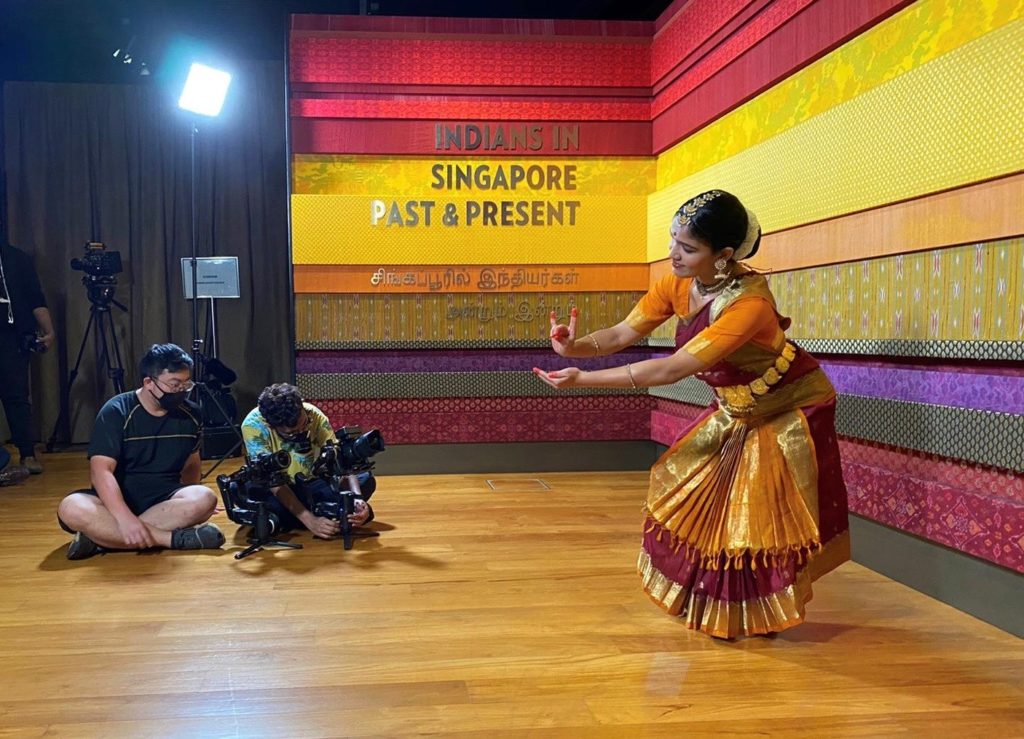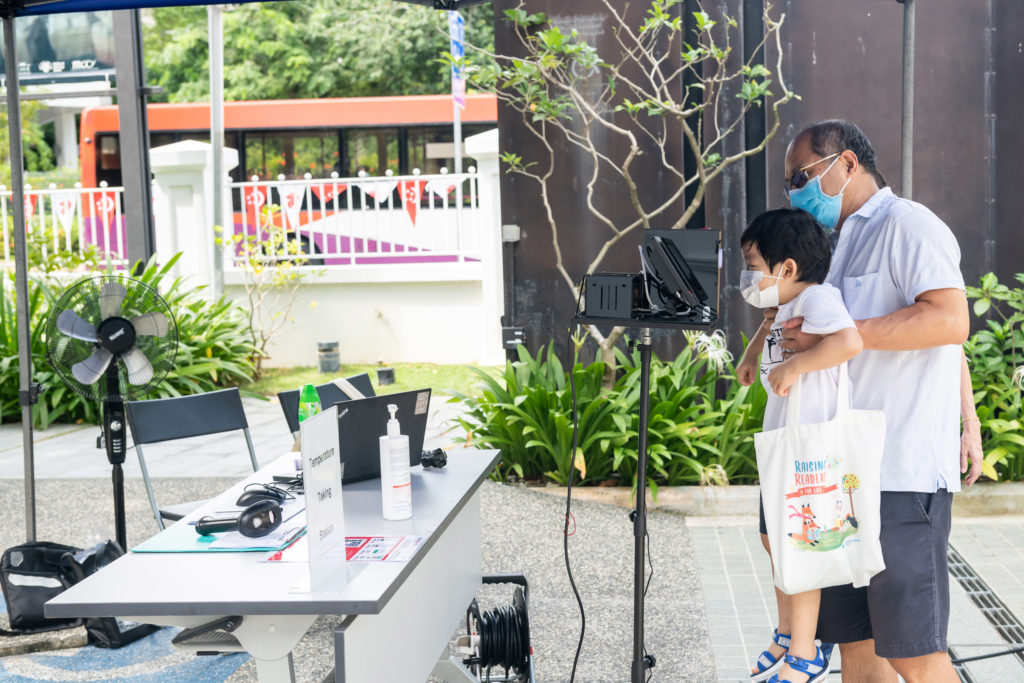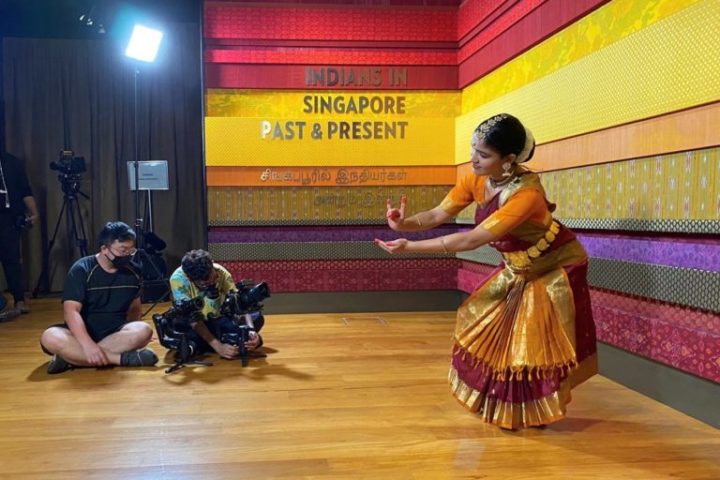
Alvin Tan Tze Ee
Deputy Chief Executive (Policy and Community) National Heritage Board of Singapore
Museums have no borders,
they have a network
November 19, 2020
We are always looking for new ideas!
To participate in our ICOM Voices
call for contributions, click here.
Keywords: Covid-19; Museums; Community; Engagement; Digital.

With the Covid-19 pandemic and the introduction of mandatory measures to curb the spread of the coronavirus, these heritage institutions have expanded their roles from museum operators to cultural first responders to the pandemic, patrons of the arts, and even ‘cheerleaders’ for their communities, by offering content with uplifting messages.
Deputy Chief Executive (Policy & Community) at National Heritage Board of Singapore, Alvin Tan, interviewed the General Managers (GMs) of the three institutions: Asmah Alias (MHC), Maria Bhavani Dass (IHC) and Winston Lim (SYSNMH) to find out more about how the roles of their institutions, as community museums, have evolved as a result of Covid-19 crisis.
How did your heritage institutions manage to respond so quickly to the Covid-19 crisis and embrace digitalization?
Asmah Alias, General Manager of Malay Heritage Centre: We were lucky in that the National Heritage Board of Singapore had established a quick response team to Covid-19, which tracked the impact of the pandemic on museums worldwide, and shared best practices from international organisations such as ICOM, UNESCO, NEMO, AAM, as well as innovative initiatives from local museums.
Maria Bhavani Dass, General Manager of Indian Heritage Centre: We also studied successful campaigns such as #MuseumMomentofZen and #MuseumFromHome, as well as initiatives such as the J. Paul Getty Museum’s and the Rijksmuseum’s stay home challenges. As a result, we were able to participate in some of these campaigns even though we are in a different part of the world, and adapt these relevant initiatives for our local audiences.
Winston Lim, General Manager of Sun Yat Sen Nanyang Memorial Hall: I think we need to stress two key factors of success: first, we had a supportive senior management team, which provided the necessary guidance and yet allowed our teams the freedom to experiment with new digital offerings; and second, our teams were open to learning from museums overseas, and nimble enough to adapt quickly to international and local trends.
What were your institutions’ considerations when developing this new digital content, and what was its focus?
GM/IHC: During the early days, our digital content focused on using our collections to reinforce national health guidelines such as wearing masks, avoiding handshakes, keeping a safe distance, and to uplift the spirits of Singaporeans with posts of artefacts with positive messages. To be frank, we were really experimenting with our digital content at this stage.
GM/MHC: When we gained more confidence, we shifted our focus and deployed considerable resources on creating digital exhibitions and online guided tours as well as educational materials. These educational materials included DIY traditional games, crosswords, jigsaw puzzles, online quizzes, and colouring sheets, which families could do together at home.
GM/SYSNMH: Now that we have a better handle on our digital offerings, we are focusing our attention on developing more sensitive metrics to track their effectiveness, and studying different ways to monetise parts of our digital content that are currently offered free-of-charge.

Besides offering more uplifting and educational digital content, how else have the roles of the heritage institutions evolved with Covid-19?
GM/MHC: During this period, we found ourselves having to rally our communities, and this is especially relevant to MHC. Due to Covid-19 measures, the Muslim community in Singapore could not break their fast at the mosque nor visit each other during Ramadan. In response, MHC launched an online campaign that allowed the community to get together online. Through this campaign, Singaporeans, both Muslims and non-Muslims, could partake in the festive spirit and learn more about these traditions and practices.
GM/SYSNMH: Likewise, we launched our first digital edition of the Mid-Autumn Festival (14 September to 11 October 2020) to bring communities together digitally, as it is traditionally a time of reunion, which has proved to be challenging during this period. That is why our digital festival featured a line-up of family-friendly digital initiatives such as online cooking classes and interactive craft activities that involved the participation of families and friends so as to promote greater bonding between participants.

Can you tell us how your heritage institutions are providing assistance to local artists and arts groups?
GM/SYSNMH: It was a conscious decision amongst all our three institutions that we should do something to help our local artists and arts groups who were—and still are—struggling due to the cancellation and postponement of arts and cultural programmes. We decided that we would showcase their works and provide them with a source of income.
GM/IHC: One of our first initiatives was to act as an ‘aggregator’, allowing art groups to use our social media platforms to showcase their works in order to extend their reach. This was a win-win outcome as it provided us with new digital content and still allows Singaporeans to access arts and culture. Thus far, we have showcased performances for more than 10 arts groups, and we intend to continue with this initiative.
GM/MHC: We subsequently commissioned and worked with six local artists to present their first ever digital exhibitions, which showcased five animated artworks per artist and these online exhibitions have attracted more than 18,000 views.
GM/IHC: In addition, we are also prototyping the first ever digital editions of our annual Culture Festivals. For these festivals, we have commissioned more artists and arts groups, and worked with them to present digital showcases and programmes in the coming months.
To conclude, could you talk about how Covid-19 has impacted museum operations and programming, and share some of your plans for the future?

GM/SYSNMH: In this era of mandatory safe distancing, our institutions had to impose capacity limits on the number of visitors. We also introduced various measures such as temperature screening, visitor contact tracing, and step up our cleaning schedule by installing hand sanitisers, safe distancing stickers and signage.
GM/MHC: We also deployed extra efforts to reassure and ‘prepare’ our visitors for their visit by ensuring that our institutions are ‘SG Clean’ (a quality mark awarded to organisations that uphold good sanitation standards and hygiene practices) and creating an online re-opening resource booklet.
GM/IHC: I think that moving forward, like many museums worldwide, we need to work on how to attract visitors while ensuring their safety to the best of our ability. We also need to explore and experiment with various ways of presenting our programmes, and thus far, we are moving towards a ‘hybrid’ format, which combines both limited onsite programming with digital programming, as we continue to navigate a new and uncertain Covid-19 world.
References and resources:
For more information about the Indian Heritage Centre, please visit its website at www.indianheritage.org.sg or its Facebook page at www.facebook.com/indianheritagecentre.
For more information about the Malay Heritage Centre, please visit its website at www.malayheritage.org.sg or its Facebook page at www.facebook.com/malayheritage.
For more information about the Sun Yat Sen Nanyang Memorial Hall, please visit its website at www.sysnmh.org.sg or its Facebook page at www.facebook.com/sysnmh.
_________________
Opinions expressed in the article do not commit ICOM in any way and are the responsibility of its author.
